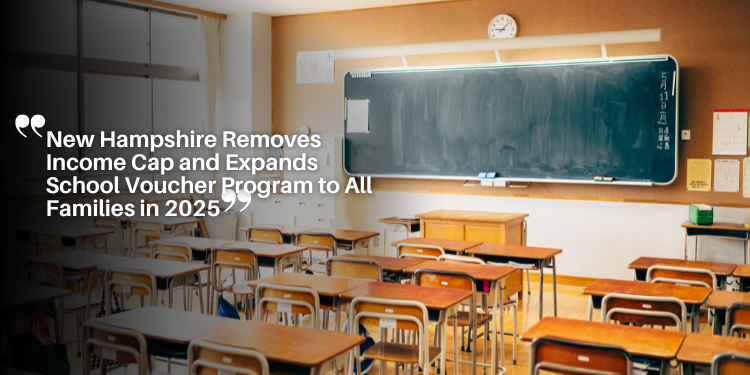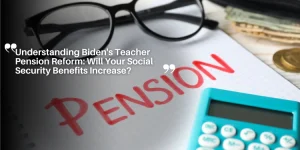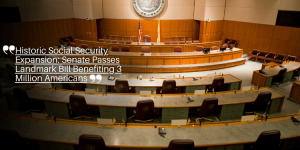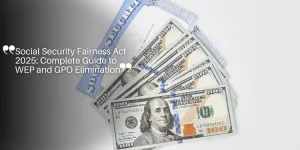New Hampshire Removes Income Cap and Expands School Voucher Program to All Families in 2025

Education Freedom Account Expansion Ushers in Universal Access Across the State
In 2025, New Hampshire implemented a historic transformation of its education policy by eliminating income requirements for its school voucher initiative, known as the Education Freedom Account (EFA).
Signed into law by Governor Kelly Ayotte, the new legislation opens the door for every family in the state to access public funds to tailor their children’s education—regardless of income.
The reform marks a significant departure from the original guidelines of the EFA program, which had previously limited eligibility to low- and middle-income families.
Now, every student in New Hampshire can receive government funding of at least $4,265 per year, with children who have special educational needs qualifying for up to $9,676 annually.
A Major Milestone in School Choice Policy
Initial Limits Replaced by Universal Eligibility
Launched in 2021, the Education Freedom Account program was initially framed as a way to provide more opportunities for families earning less than 350% of the federal poverty line—approximately $112,525 for a family of four By 2024, more than 5,000 students were enrolled, and participation had grown steadily each year.
Under the new law, a 10,000-student cap will be imposed for the first year of the expanded program.
However, this ceiling is designed to be flexible: if enrollment reaches 90% of capacity, the state is authorized to increase the limit in subsequent years, allowing the program to grow sustainably.
Universal ESAs and the National Context
New Hampshire Joins the Ranks of Universal Voucher States
According to EdChoice, a leading school choice advocacy organization, New Hampshire is now the eighth state to adopt a universal education savings account (ESA) program.
| 📚 Category | Eligible Expenses |
|---|---|
| 🏫 Tuition | Private or parochial school tuition fees |
| 🏠 Homeschooling | Curriculum materials, books, and supplies for home education |
| 🎭 Activities | Extracurricular programs such as music, arts, or sports |
| 🧠 Therapies | Educational therapies, including speech and occupational therapy |
| 💻 Digital Tools | Online learning platforms, apps, and software subscriptions |
| 🚌 Transportation | Transportation to educational services and programs |
| ➕ Other | Any other approved educational expenses under ESA guidelines |
This flexibility was hailed by supporters as a way to give families control over their children’s educational journey, extending far beyond the traditional classroom.
Partisan Divide and Legislative Journey
Senate and House Debates Reflect Deep Division
The legislation, known as Senate Bill 295, passed the New Hampshire Senate on a party-line vote.
In the House, it received some intra-party resistance, with 14 Republican lawmakers joining Democrats in opposition.
Despite this, the bill prevailed, driven by the Republican Party’s legislative majority and strong executive support. Party leaders described the expansion as a “defining victory” for education reform.
Meanwhile, Democrats voiced unified and harsh criticism, arguing that the policy undermines the public education system and lacks fiscal responsibility.
Financial Implications and Budget Uncertainty
Program Could Cost Far More Than Budgeted
The EFA is funded through New Hampshire’s Education Trust Fund, but the exact financial impact of the expansion remains unclear.
For the upcoming academic year, the state Senate approved $39.3 million in funding, with $47.8 million allocated for the following year. Both amounts exceeded Governor Ayotte’s initial proposal.
Still, projections suggest that if 10,000 students participate, and if the average per-student funding remains at the current level of $5,204, the total cost could exceed $52 million—well above the budgeted amount.
Ripple Effects on Public School Funding
Because public school funding in New Hampshire is calculated on a per-pupil basis, schools that lose students to the EFA also lose their corresponding state funding.
This has raised alarms among educators and local officials who argue that the shift could severely damage district budgets and increase disparities between schools.
Religious Schools and Enrollment Trends
Faith-Based Institutions Stand to Benefit Most
An analysis by the Concord Monitor found that nearly 90% of all EFA funds spent on tuition in 2022-2023 went to religiously affiliated schools.
Since the program’s inception, 11 out of 28 independent Christian schools in the state have either opened or expanded enrollment by over 50%.
Some of these schools have reported renovations and facility expansions, supported in part by the increased and stable funding made possible through the EFA.
This has raised additional concerns among secular education advocates, who argue that public funds should not disproportionately support religious education.
Management and Oversight of the Program
Administering Organization Celebrates the Change
The EFA program is managed by a private organization under contract with the state. Its executive director, Kate Baker Demers, lauded the policy shift as a win for families and choice.
According to Demers, families now have the opportunity to customize education with unprecedented freedom, rather than conforming to a one-size-fits-all public model.

Debates Over Original Proposal and Final Outcome
Ayotte’s Proposal Was More Restrictive Than Final Version
While Governor Ayotte had advocated for the expansion during her gubernatorial campaign, her original plan would have restricted eligibility to either low-income families or those whose children were previously enrolled in public schools.
However, most Republican legislators rejected the requirement for prior public school attendance, calling it too limiting. House Education Funding Committee Chair Rick Ladd described the restriction as “very disruptive.”
Data from 2024 showed that only 32% of new EFA participants came from public schools, reinforcing arguments from lawmakers that limiting access based on prior enrollment would have excluded a large portion of interested families.
Looking Ahead: A New Era of School Choice in New Hampshire
The expansion of New Hampshire’s EFA (Education Freedom Account) program represents a bold step into universal school choice, one that places the power to direct educational resources in the hands of families.
By removing income caps and allowing virtually all families to access public education funding for private or alternative schooling, the state has positioned itself at the forefront of a national debate over the future of American education.
While celebrated by conservatives and school choice advocates, who argue that the program empowers parents and fosters innovation through competition, the policy continues to spark fierce debates over equity, accountability, and long-term impact on public education.
Supporters highlight stories of families who are now able to tailor their children’s education to specific needs, including homeschooling, special education services, and religious or values-based instruction.
They argue that such flexibility promotes educational freedom and individual student success.
Critics, however, warn that expanding EFAs without income restrictions could lead to the erosion of public school systems, particularly in rural and underfunded districts.
Concerns have been raised about whether taxpayer dollars are being adequately tracked and whether private education providers are being held to the same academic and financial standards as public institutions.
There is also apprehension about the potential for increased segregation—both socioeconomically and ideologically—as wealthier or more informed families exit the public system, leaving behind those with fewer resources or less access to information.
At the financial level, questions persist about the long-term sustainability of funding both public schools and an ever-growing roster of privately educated students.
Lawmakers face the complex challenge of balancing state education budgets while ensuring no child is left without access to quality education.
Whether this reform becomes a model for other states or a cautionary tale will depend on how its outcomes unfold in the coming years—both financially and academically.
The data collected over the next few legislative cycles will be critical in determining if New Hampshire’s leap into universal school choice sets a precedent for innovation—or unintended consequences—in American education.







